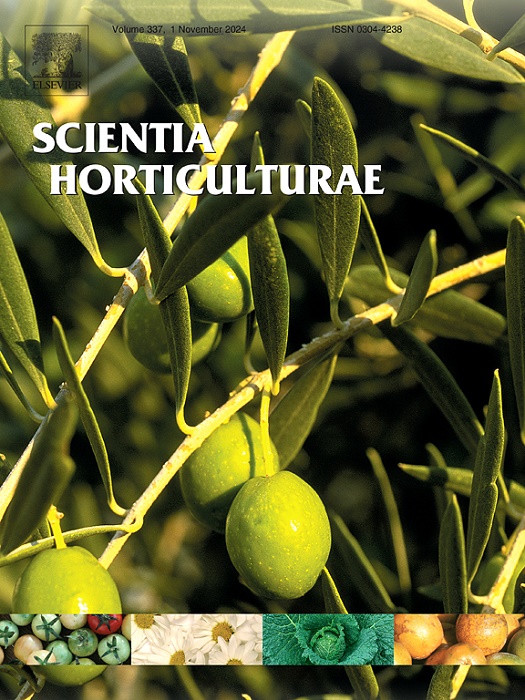Light and substrate composition control root exudation rates at the initial stages of soilless lettuce cultivation
IF 3.9
2区 农林科学
Q1 HORTICULTURE
引用次数: 0
Abstract
Plant root exudation is an inherent metabolic process that enhances various functions of the root system like the mobilization of nutrients and interactions with surrounding microbial communities. In soilless crop production, roots are temporally submerged in a nutrient solution affecting the root exudation process. In this study, we asked whether root exudation in soilless cultures is affected by culturing method and substrate composition, important factors determining the root microbial ecosystem. Exploration of different growth conditions revealed that the effect of light quality depended on the substrate used. The impact of light quality and substrate was assessed by growing soilless lettuce in 100 % red light (660 nm), 100 % blue light (450 nm), and white light (full-light spectrum) in deep flow culture, or in 100 % perlite, 100 % potting soil, or mixtures of both growing media. Root exudates were collected at different time points after transplanting. The root exudation rate declined with plant age in all culturing conditions, underscoring its importance during the early stages of development. The total carbon root exudation rate was influenced by light conditions and substrate composition at the earliest timepoint of the culture but not at later growth stages. The total carbohydrate exudation rate was significantly higher under pure blue and red light compared to white light. The impact of light depended on the presence of perlite in the substrate. The total phenolic compound exudation rate was most strongly influenced by the substrate composition and reached the highest level in either pure potting soil or pure perlite. Light and growing media influence the exudation rate at the early stage, suggesting that exudation is an adaptive process of the soilless lettuce culture.

求助全文
约1分钟内获得全文
求助全文
来源期刊

Scientia Horticulturae
农林科学-园艺
CiteScore
8.60
自引率
4.70%
发文量
796
审稿时长
47 days
期刊介绍:
Scientia Horticulturae is an international journal publishing research related to horticultural crops. Articles in the journal deal with open or protected production of vegetables, fruits, edible fungi and ornamentals under temperate, subtropical and tropical conditions. Papers in related areas (biochemistry, micropropagation, soil science, plant breeding, plant physiology, phytopathology, etc.) are considered, if they contain information of direct significance to horticulture. Papers on the technical aspects of horticulture (engineering, crop processing, storage, transport etc.) are accepted for publication only if they relate directly to the living product. In the case of plantation crops, those yielding a product that may be used fresh (e.g. tropical vegetables, citrus, bananas, and other fruits) will be considered, while those papers describing the processing of the product (e.g. rubber, tobacco, and quinine) will not. The scope of the journal includes all horticultural crops but does not include speciality crops such as, medicinal crops or forestry crops, such as bamboo. Basic molecular studies without any direct application in horticulture will not be considered for this journal.
 求助内容:
求助内容: 应助结果提醒方式:
应助结果提醒方式:


